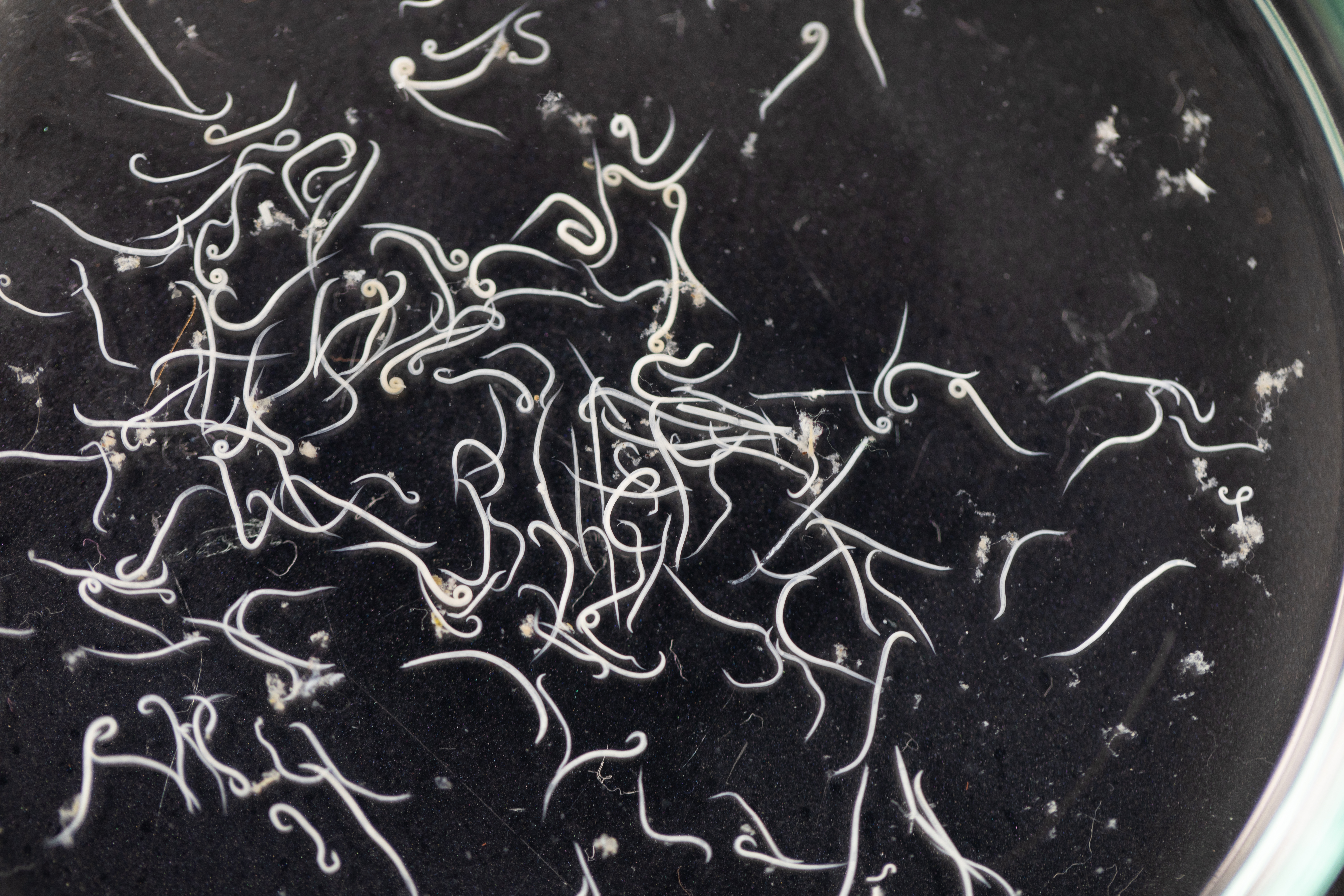
NEMA Lab
Natural Enemy Management and Applications
Publications
NEMA Lab publishes in a wide range of applied and basic peer-reviewed journals. We strive to publish Open Access whenever possible and work to develop educational content around publications for use in Community Engagement events.
Invertebrate Management
The Smart Soil Organism Detector
Biosensors and Bioelectronics | 10.1016/j.bios.2022.114417
Understanding the diversity of soil organisms is complicated by both scale and substrate. Every footprint we leave in the soil covers hundreds to millions of organisms yet we cannot see them without extremely laborious extraction and microsopy endeavors. Studying them is also challenging. Keeping them alive so that we can understand their lifecycles and ecological roles ranges from difficult to impossible. Functional and taxonomic identification of soil organisms, while possible, is also challenging. Here we present the Smart Soil Organism Detector, an instrument and machine learning pipeline that combines high-resolution imaging, multi-spectral sensing, large-bore flow cytometry, and machine learning to extract, isolate, count, identify, and separate soil organisms in a high-throughput, high-resolution, non-destructive, and reproducible manner. This system is not only capable of separating alive nematodes, dead nematodes, and nematode cuticles from soil with 100% out-of-sample accuracy, but also capable of identifying nematode strains (sub-species) with 95.5% out-of-sample accuracy and 99.4% specificity. Soil micro-arthropods were identified to class with 96.1% out-of-sample accuracy. Broadly applicable across soil taxa, the Smart SOD system is a tool for understanding global soil biodiversity.
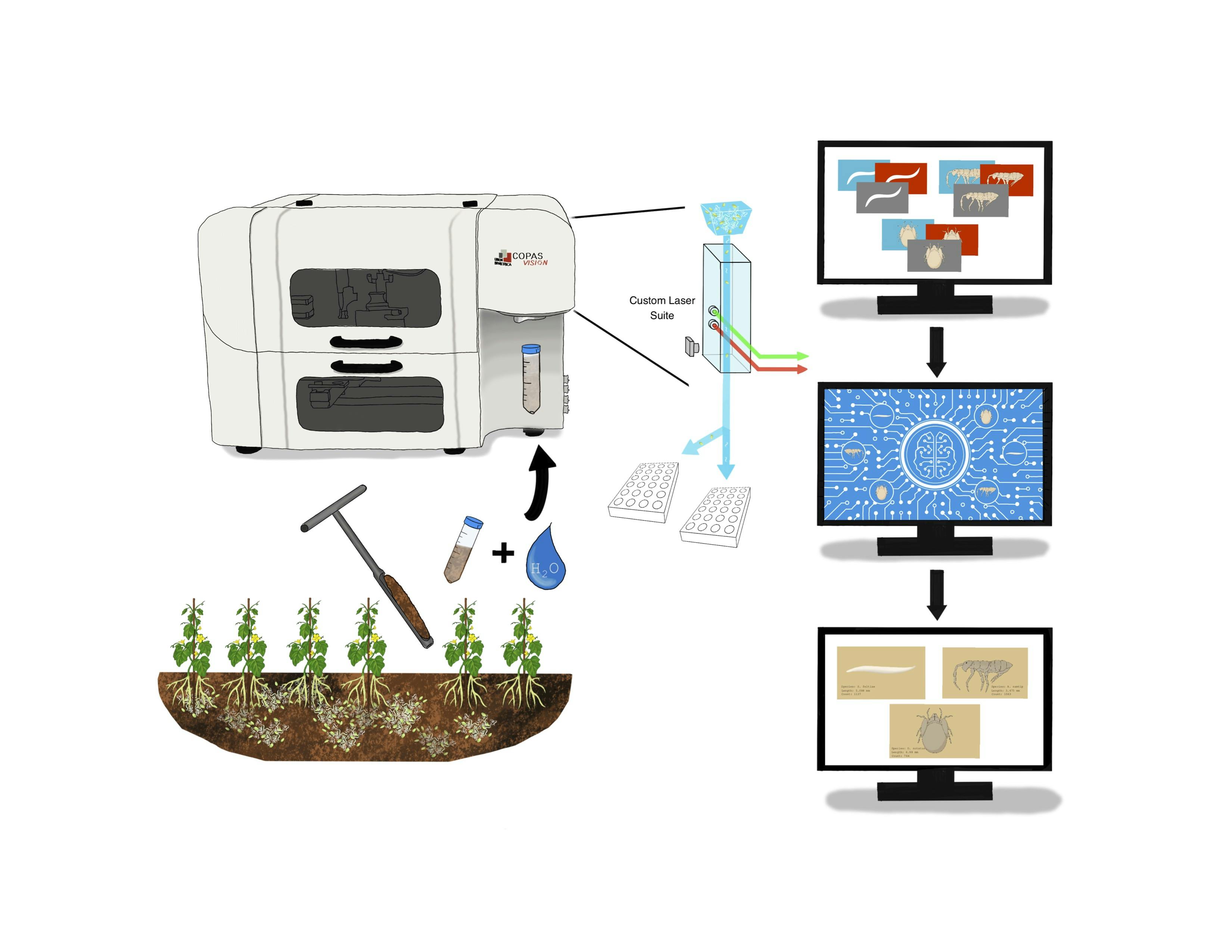
Invertebrate Management
Non-lethal effects of entomopathogenic nematode infection
Scientific Reports | 10.1038/s41598-021-96270-2
Entomopathogenic nematodes are typically considered lethal parasites of insect hosts. Indeed they are employed as such for biological control of insect pests. The effects of exposure to entomopathogenic nematodes are not strictly limited to mortality, however. Here we explore non-lethal effects of exposure to entomopathogenic nematodes by introducing the relatively non-susceptible pupal stage of Delia antiqua to thirteen different strains. We specifically chose to inoculate the pupal stage because it tends to be more resistant to infection, yet resides in the soil where it could come into contact with EPN biological control agents. We find that there is no significant mortality at the pupal stage, but that there are a host of strain-dependent non-lethal effects during and after the transition to adulthood including altered developmental times and changes in risk of death compared to controls. We also find that exposure to specific strains can reduce risk of mortality. These results emphasize the strain-dependent nature of entomopathogenic nematode infection and highlight the positive and negative ramifications for non-lethal effects for biological control of insect pests. Our work emphasizes the need for strain-specific screening of biological control agents before wide-spread adoption.
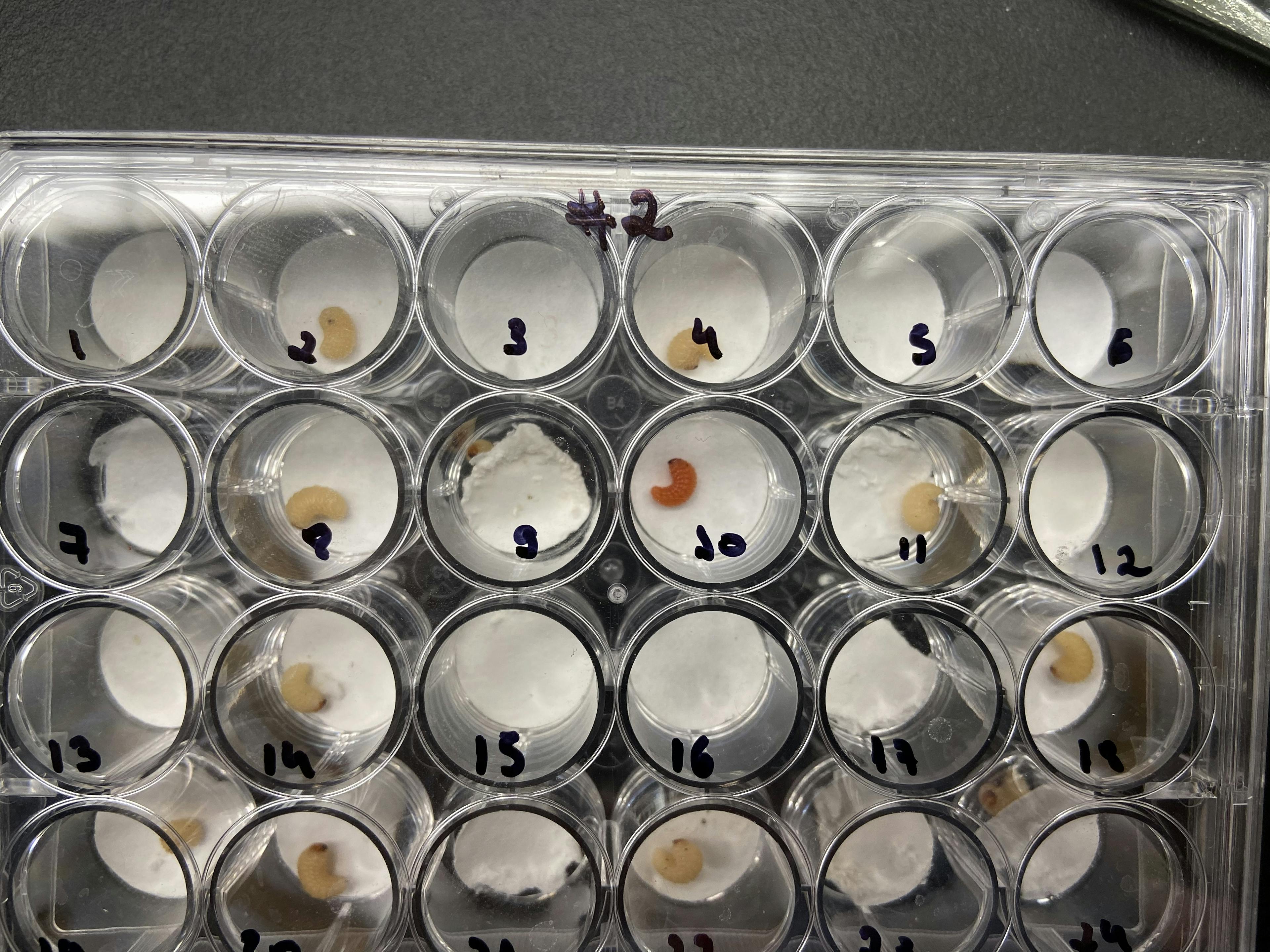
Invertebrate Management
A multi-omics approach to solving problems in plant disease ecology
PLoS One | 10.1371/journal.pone.0237975
The swift rise of omics-approaches allows for investigating microbial diversity and plant-microbe interactions across diverse ecological communities and spatio-temporal scales. The environment, however, is rapidly changing. The introduction of invasive species and the effects of climate change have particular impact on emerging plant diseases and managing current epidemics. It is critical, therefore, to take a holistic approach to understand how and why pathogenesis occurs in order to effectively manage for diseases given the synergies of changing environmental conditions. A multi-omics approach allows for a detailed picture of plant-microbial interactions and can ultimately allow us to build predictive models for how microbes and plants will respond to stress under environmental change. This article is designed as a primer for those interested in integrating -omic approaches into their plant disease research. We review -omics technologies salient to pathology including metabolomics, genomics, metagenomics, volatilomics, and spectranomics, and present cases where multi-omics have been successfully used for plant disease ecology. We then discuss additional limitations and pitfalls to be wary of prior to conducting an integrated research project as well as provide information about promising future directions.
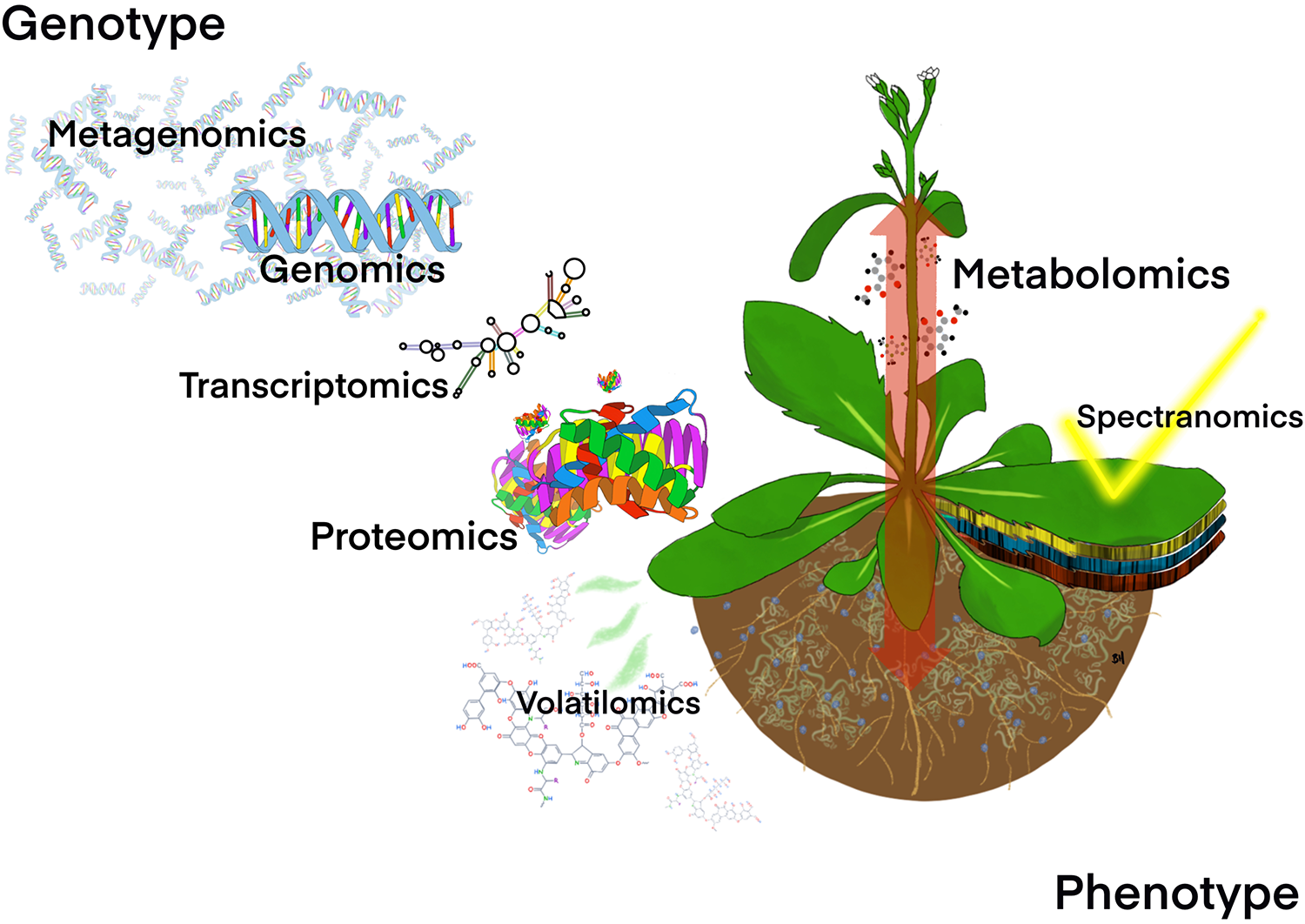
Invertebrate Management
The Lesser Chestnut Weevil (Curculio sayi): Damage and Management with Biological Control Using Entomopathogenic Fungi and Entomopathogenic Nematodes
Insects | 10.3390/insects13121097
The lesser chestnut weevil (Curcilio sayi) is an emergent pest of chestnuts in the United States that can cause multifaceted damage and has limited management options. We explored the damage caused by C. sayi in a commercial chestnut orchard. Additionally, we evaluated potential management options for biological control. We found that C. sayi emerged from infested chestnuts more than four weeks post harvest and, in some cases, single nuts can host more than 10 C. sayi larvae. We also found that nut weight continues to decline even after C. sayi larvae have emerged from the chestnuts. Specific strains of entomopathogenic nematodes increase the mortality of C. sayi larvae. Biological control using entomopathogenic fungi and entomopathogenic nematodes could be complementary approaches to managing this pest and reduce C. sayi populations and chance of damage.
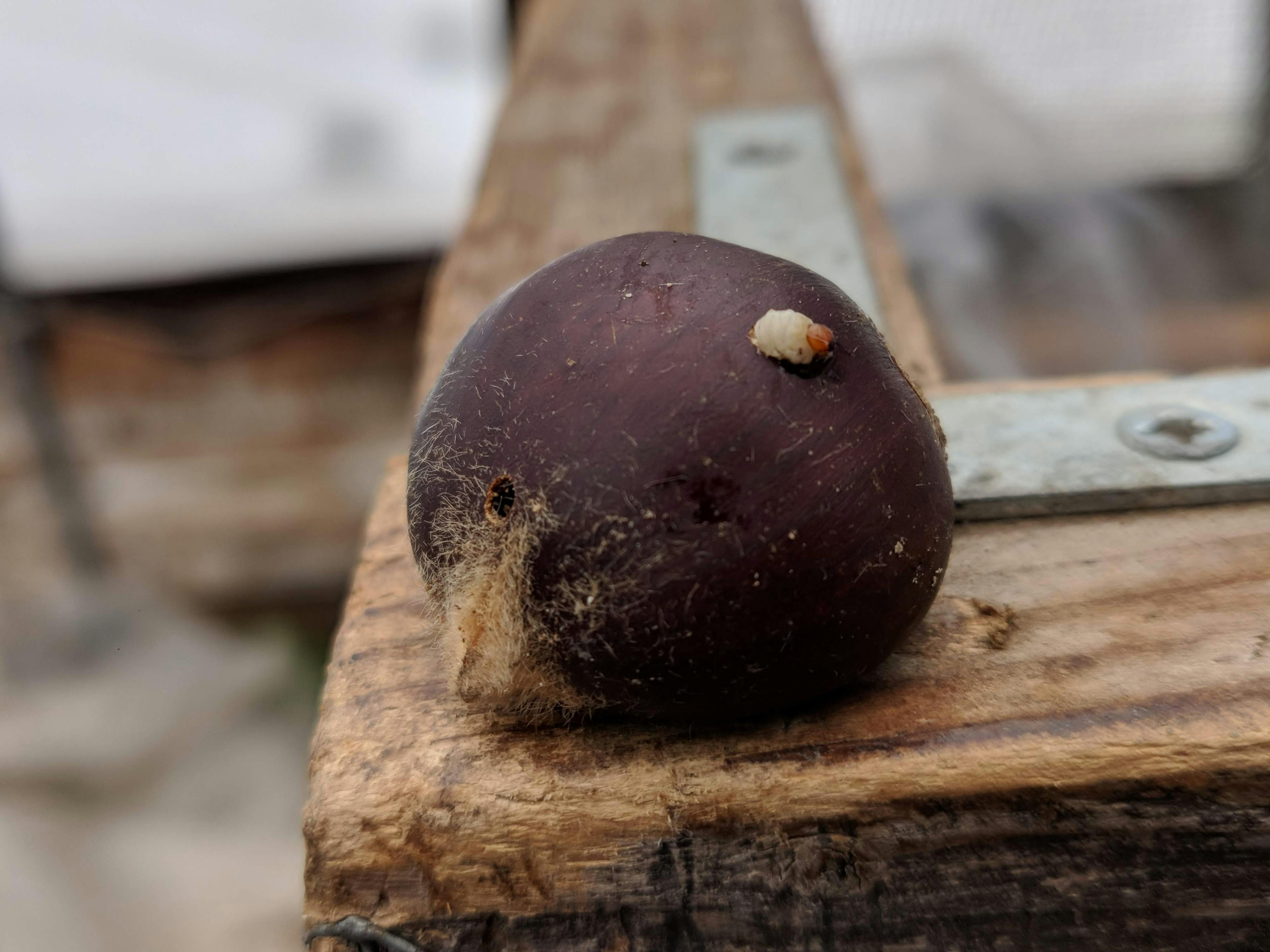
Invertebrate Management
The Ecology of Salicylic Acid Signaling: Primary, Secondary and Tertiary Effects with Applications in Agriculture
Int. J. Mol. Sci. | 10.3390/ijms20235851
The salicylic acid pathway is one of the primary plant defense pathways, is ubiquitous in vascular plants, and plays a role in rapid adaptions to dynamic abiotic and biotic stress. Its prominence and ubiquity make it uniquely suited for understanding how biochemistry within plants can mediate ecological consequences. Induction of the salicylic acid pathway has primary effects on the plant in which it is induced resulting in genetic, metabolomic, and physiologic changes as the plant adapts to challenges. These primary effects can in turn have secondary consequences for herbivores and pathogens attacking the plant. These secondary effects can both directly influence plant attackers and mediate indirect interactions between herbivores and pathogens. Additionally, stimulation of salicylic acid related defenses can affect natural enemies, predators and parasitoids, which can recruit to plant signals with consequences for herbivore populations and plant herbivory aboveground and belowground. These primary, secondary, and tertiary ecological consequences of salicylic acid signaling hold great promise for application in agricultural systems in developing sustainable high-yielding management practices that adapt to changing abiotic and biotic environments.
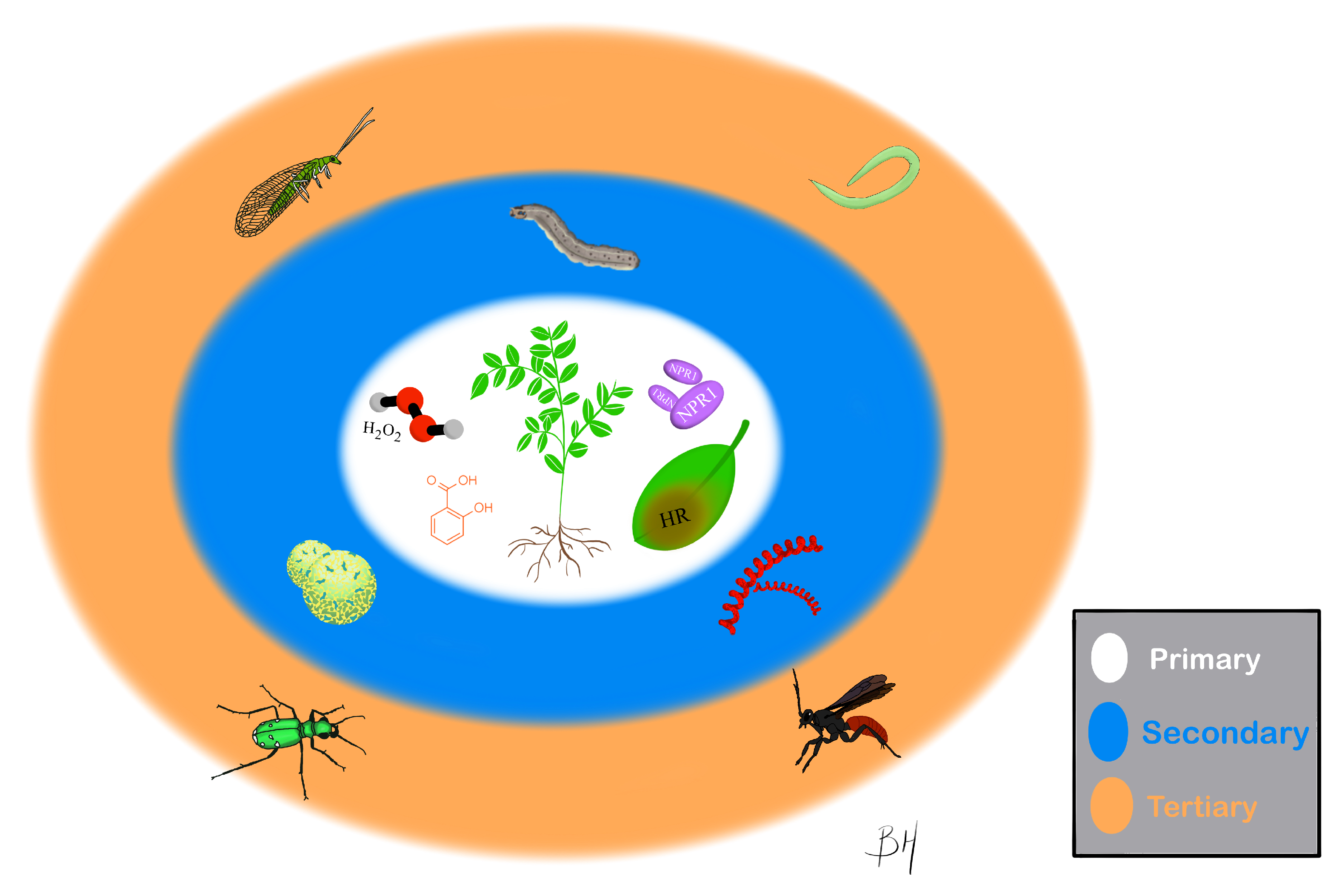
Invertebrate Management
Stimulation of the Salicylic Acid Pathway Aboveground Recruits Entomopathogenic Nematodes Belowground
PLoS One | 10.1371/journal.pone.0154712
Plant defense pathways play a critical role in mediating tritrophic interactions between plants, herbivores, and natural enemies. While the impact of plant defense pathway stimulation on natural enemies has been extensively explored aboveground, belowground ramifications of plant defense pathway stimulation are equally important in regulating subterranean pests and still require more attention. Here we investigate the effect of aboveground stimulation of the salicylic acid pathway through foliar application of the elicitor methyl salicylate on belowground recruitment of the entomopathogenic nematode, Steinernema diaprepesi. Also, we implicate a specific root-derived volatile that attracts S. diaprepesi belowground following aboveground plant stimulation by an elicitor. In four-choice olfactometer assays, citrus plants treated with foliar applications of methyl salicylate recruited S. diaprepesi in the absence of weevil feeding as compared with negative controls. Additionally, analysis of root volatile profiles of citrus plants receiving foliar application of methyl salicylate revealed production of d-limonene, which was absent in negative controls. The entomopathogenic nematode S. diaprepesi was recruited to d-limonene in two-choice olfactometer trials. These results reinforce the critical role of plant defense pathways in mediating tritrophic interactions, suggest a broad role for plant defense pathway signaling belowground, and hint at sophisticated plant responses to pest complexes.
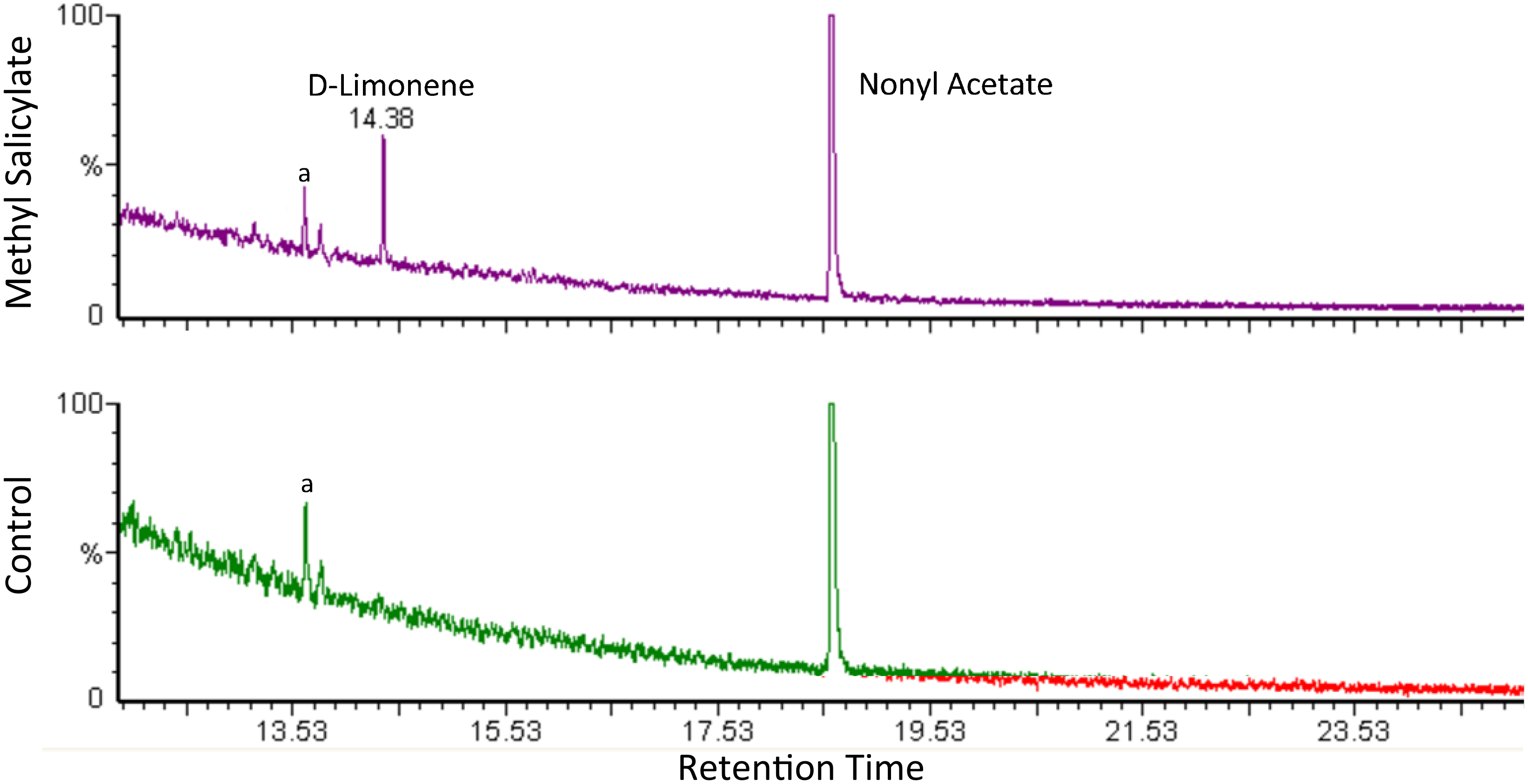
Invertebrate Management
Phenology and Monitoring of the Lesser Chestnut Weevil (Curculio sayi)
Insects | 10.3390/insects13080713
The lesser chestnut weevil (Curcilio sayi) is an emergent pest of chestnuts in the United States. Knowledge of this weevils phenology and the ability to monitor its populations will help us understand how this pest is emerging with expanding chestnut production and provide the means to begin to mitigate its effects on chestnut production. We explored the seasonal emergence of C. sayi in upstate New York through the use of traps and soil microcosms to understand when weevils begin to emerge and when the population peaks. We found that pyramid traps are most effective for monitoring and that populations have one generation that tends to peak late in the season. We also found that generational cohorts may stagger their emergence and delay leaving the soil for more than one year.
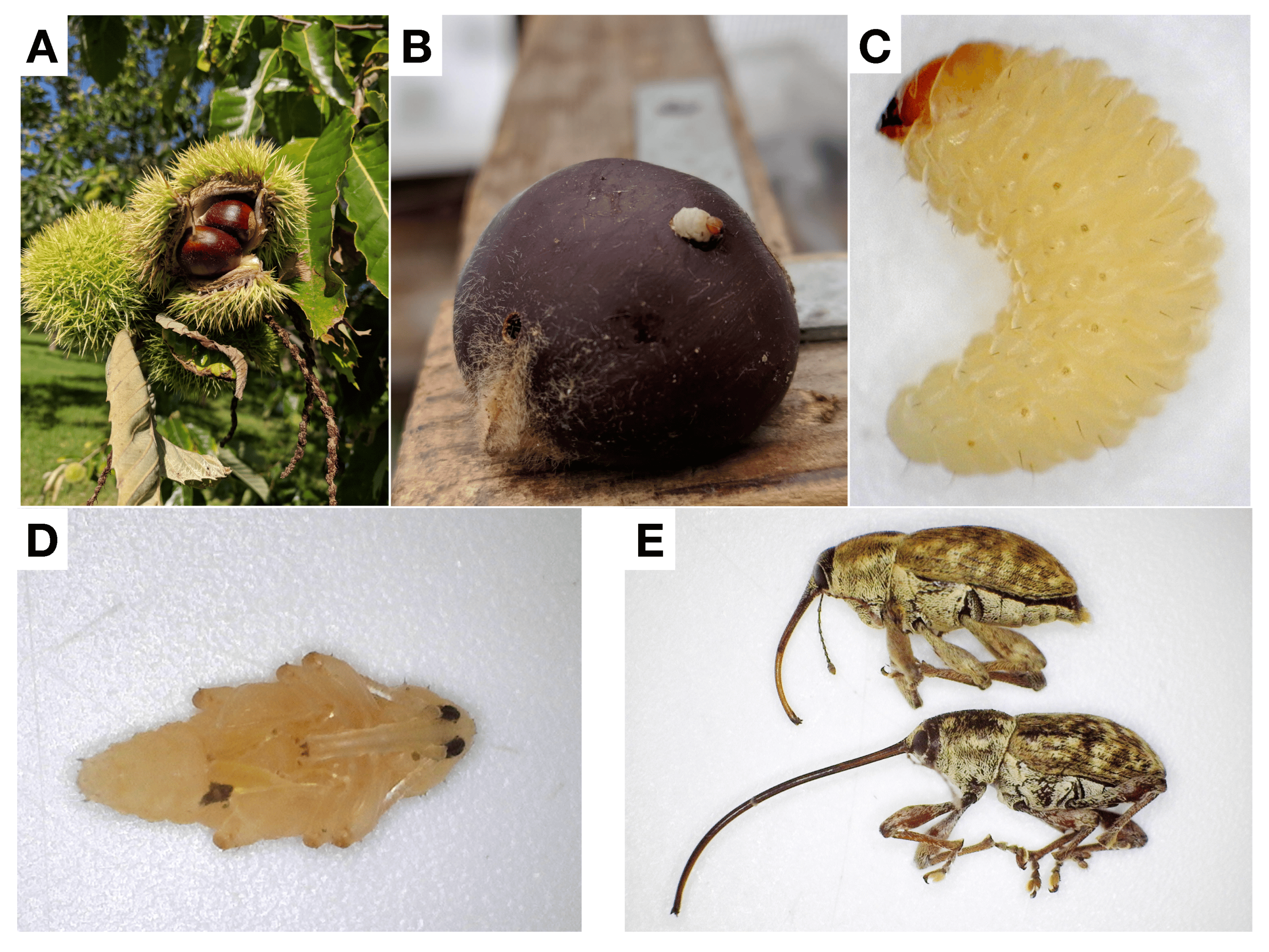
Invertebrate Management
Eliciting maize defense pathways aboveground attracts belowground biocontrol agents
Scientific Reports | 10.1038/srep36484
Plant defense pathways mediate multitrophic interactions above and belowground. Understanding the effects of these pathways on pests and natural enemies above and belowground holds great potential for designing effective control strategies. Here we investigate the effects of aboveground stimulation of plant defense pathways on the interactions between corn, the aboveground herbivore adult Diabrotica speciosa, the belowground herbivore larval D. speciosa, and the subterranean ento-mopathogenic nematode natural enemy Heterorhabditis amazonensis. We show that adult D. speciosa recruit to aboveground herbivory and methyl salicylate treatment, that larval D. speciosa are relatively indiscriminate, and that H. amazonensis en-tomopathogenic nematodes recruit to corn fed upon by adult D. speciosa. These results suggest that entomopathogenicnematodes belowground can be highly attuned to changes in the aboveground parts of plants and that biological control can be enhanced with induced plant defense in this and similar systems.
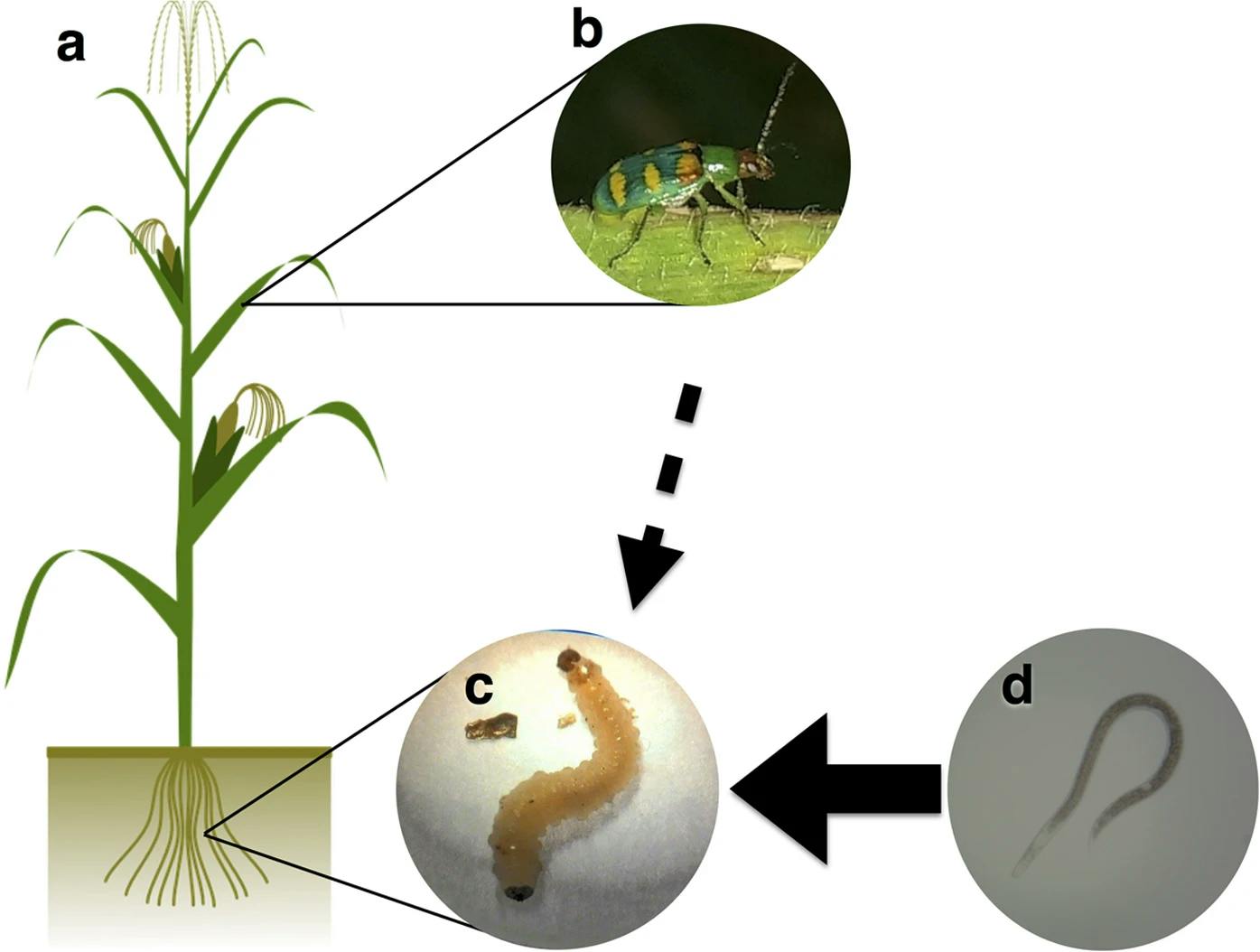
Invertebrate Management
Dual role of milk on aphid and powdery mildew control in kale
Scientia Horticulturae | 10.1016/j.scienta.2016.03.023
Powdery mildew (PM) is the most important kale disease and it is more difficult to manage when plants are simultaneously infested with aphids. In this work, we aimed at evaluating the contribution of a sulphur-based fungicide, water, or cow's milk to control PM as well as the aphids Brevicoryne brassicae and Myzus persicae on kale under greenhouse conditions. We also assessed in vitro the effect of the products mentioned on their selective action on growth of the entomopathogenic fungus and the aphids. Four week-old plants naturally infested with aphids and PM were evaluated for disease severity and aphid counts. Plants were sprayed weekly with milk (10% v/v), sulphur (2 g/L), or water. From 7 to 28 days after the experiment onset (DAEO), plants were evaluated weekly for the disease severity, number of each aphid species, and number of fungal-colonized dead aphids. Milk and fungicide sprayed on plants reduced disease (30% and 10%, respectively) compared to the water control (P ≤ 0.001). In addition, B. brassicae population was reduced for the milk but not for the fungicide treatment at 21 DAEO. Surprisingly, the dead aphids were parasitized by a fungus identified as Cladosporium cladosporioides. Moreover, milk treatment did not interfere with C. cladosporioides in vitro growth. On the contrary, sulphur, copper oxychloride, and azoxystrobin reduced fungal growth. Additionally, C. cladosporioides, milk, and milk + C. cladosporioides reduced B. brassicae and M. persicae populations. A dual role of milk on both powdery mildew and aphid control reinforces the usefulness of this product on glasshouse kale production.